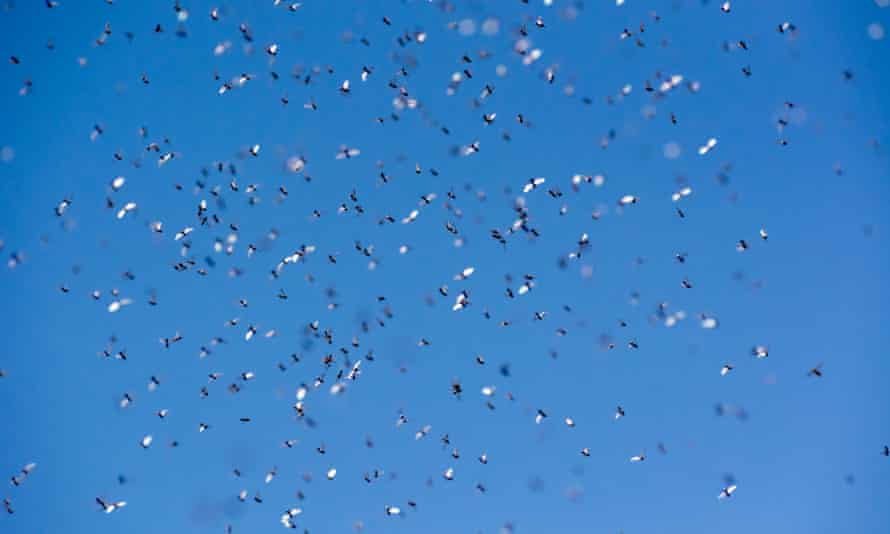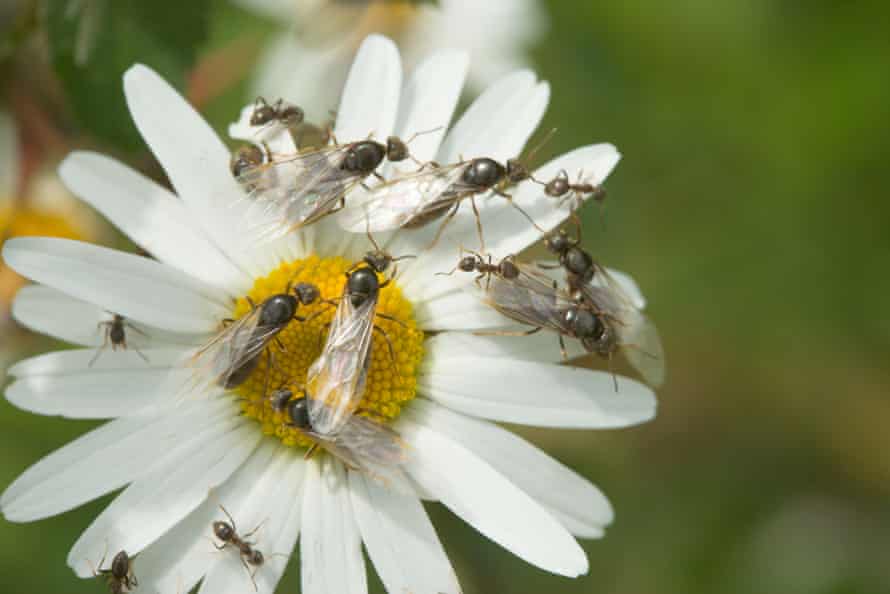Country diary: flying ant day is here, there and everywhere
Langstone, Hampshire: Flying en masse means safety in numbers, though thousands are picked off by the avian onslaught

I awoke to the raucous screeching of black-headed and herring gulls, punctuated by the exclamatory yelps of Mediterranean gulls. Pulling back the curtains, I saw they were swooping and swirling above the garden in a feeding frenzy, their bills snapping as they snatched insects on the wing.
There had been a heavy downpour overnight and the subsequent combination of bright sunshine, high humidity and low wind speed had triggered the mass emergence of black garden ants (Lasius niger). Outside I found fertile winged adults – known as alates – erupting from a crack in the paving slabs, while more streamed out from a second nest beneath the bird bath.
“Flying ant day” tends to be spoken about as a nationwide, annual, one-off event. If conditions are consistent, the spectacle can be witnessed across a wide area – social media alerted me to concurrent emergences all along the south coast. However, it often takes place over several days and can occur anytime between June and August, depending on local conditions.
The ants took to the air and scattered, the larger virgin queens wafting pheromone trails to lure drones from other colonies. The fastest, most robust suitors coupled with the queens in nuptial flight. As well as increasing the probability of finding a mate, flying en masse means safety in numbers, though thousands of individuals were still being picked off by the avian onslaught.

The feasting continued for almost two hours, the gulls joined by a flock of swifts, scything through clouds of ants on crescent wings. Swallows and house martins followed, hawking over the trees and chimney stacks, where the insects were gathering in dense swarms – a behaviour known as “hilltopping”. These aggregations sometimes grow dense enough to be picked up on the Met Office’s radar.
After mating, males die within a few days. Surviving fertilised queens have an average lifespan of 15 years, but the remainder of their existence will be earthbound, as they strike out on their own to establish new colonies. That evening, I found their chewed-off wings littering the patio like iridescent scraps of cellophane.